This week I will be finishing my examination of the 2d green from the 1894 first Waterlow watermarked issue and starting my examination of the 2.5d lake. The only aspect remaining to be looked at on the 2d green are the perforations, which I will discuss now.
Perforations on the 2d Green
Gibbons lists five perforations for this stamp:
- 14.5 to 15
- 15.5 to 15 compound with 12-13.
- 13.5 to 14.
- 13.5 to 14 compound with 12-13.
- 12 to 13.
Of course, just like all the other values looked at so far, the picture is quite a bit more complicated than that. The perforations that I have found in my detailed study of these stamps is as follows:
- 13; 14 x 12; 13 x 14 x 13; 12
- 14 x 13
- 14.4 x 14 x 14 x 14
- 14
- 12; 13 x 12.3; 12.6 x 14 x 12.9; 11.7
- 14.1 x 14 x 14.1 x 14; 12
- 14.1 x 14 x 14 x 14
- 14 x 14 x 13.9 x 14
- 14 x 13.9 x 14.1 x 13.8
- 13 x 12.2 x 13 x 12.4
- 14 x 13 x 14 x 13; 12
- 14 x 14.2 x 14 x 14
- 14 x 14; 12.4 ; 13.1 x 14 x 13.4 ; 12.1
- 14.1 x 14 x 13.9 x 14
- 13.9 x 14 x 13.8 x 14.1
- 14 x 14 x 14 x 13.9
- 14.1 x 14 x 14 x 13.9
- 14.1 x 14.1 x 14 x 14;12.3
- 14 x 14 x 13.8 x 14
- 14.2 x 13;14.2 x 14.2 x 13.9
- 14 x 14.3 x 13.9 x 14.3
- 12.8 x 14; 12; x 12.75 x 12; 14
- 14.2
- 14 x 14;12 x 14 x 14.1
- 14 x 14.1
- 14 x 14 x 14.1 x 14
- 14.2 x 14 x 13.4 x 14
- 14.1 x 14 x 14.2 x 14.3
- 14 x 14; 12 x 14 x 12; 14
- 14.2 x 14 x 14.1 x 14
- 14 x 14.1 x 14 x 14
- 14.3 x 14.1 x 14.2 x 14.1
- 13; 12.4; 12 x 14 x 12.8 ; 12 x 14.1
- 14; 12 x 13 x 14.2 x 14; 12.4 ; 13.1
- 13.9 x 12.75 x 13.9 x 12.75;11.9
- 15.1 x 15.1 x 15 x 15.1
- 14 x 12; 12.9 x 14 x 12.9
Shades of the 2.5d Carmine Lake
I have found four distinct shades on this stamp, one of which appears to be the result of oxidation of the ink, which this value seems quite prone to. The scan below shows these four shades together:
Below I will show a larger scan of each shade and describe it in terms of the Stanley Gibbons Colour Key.
This shade is closest to Gibbons's carmine shade, but is just a touch duller.
This shade is closest to Gibbons's brown lake, but is deeper. It appears to have resulted at least in part from the oxidation of the lake ink.
This shade is a perfect match to Gibbons's deep carmine.
This shade is the same intensity as Gibbons's deep carmine, but is considerably duller. So I would call it the deep dull carmine.
Paper and Gum
This stamp is found on no fewer than 8 types of paper and gum:
- Thin translucent yellowish horizontal wove paper with coarse horizontal mesh.
- Medium translucent yellowish horizontal wove paper with coarse horizontal mesh. The gum is creamy, smooth and has a semi-gloss sheen.
- Thin, white horizontal wove paper, with fine horizontal mesh. The gum is colourless, and finely crackly, with a satin sheen.
- Thick, opaque, cream coloured horizontal wove paper with fine mesh. This is the scarcest paper type by far - I only have a single used example out of almost 100 stamps.
- Medium opaque vertical wove paper with very fine vertical mesh. The gum is cream coloured, thin and has a satin sheen.
- Medium translucent vertical wove paper with fine vertical mesh. The gum is colourless, slightly crackly and has a semi-gloss sheen.
- Medium translucent white vertical wove paper with coarse vertical mesh. The gum is colourless, smooth, thin and has a satin sheen.
- Medium translucent cream vertical wove paper with coarse vertical mesh. The gum is yellowish, smooth and has a satin sheen.
The scans below illustrate these types:
Types 1 and 2.
Types 3 and 4.
Types 5, 6, 7 and 8
Plate Flaws and Re-Entries
Of all the stamps in the set, this is the one with the fewest listed plate markings and re-entries. Ince and Osborne list only sets of markings. The first is common to every position in the sheet, and the other two to specific positions: position 21 and position 40.
The markings are as follows:
- All positions: There are plate dots located in both O's , the A and second R of "Protectorate". There is also a dot in the perimeter below the A, and in the cone shaped ornament above "CT". There is also doubling of the outer vertical framelines in the upper corners of the stamp.
- Position 21: There is a dash of colour in the outer margin to the left of the "N" of Niger".
- Position 40: There is a spot of colour in the outer margin at the bottom left corner.
Unfortunately, despite having almost 100 examples of this stamp, I do not have an example of either position 21 or 40, so I cannot illustrate them here. However, I can show the characteristics specific to all positions in the high resolution scans below:
The dots in the O's are small and difficult to see. However the dots in the cone shaped ornament above CT, in the second E and below the A are all very clear.
Here is a nice, clear example of the doubling of the upper right frameline. Despite the notation by Ince and Osborne that this doubling occurs on both left and right framelines of all stamps, it is not usually anywhere near this clear. On this stamp the doubling is only this clear on the right side of the design, and not on both sides.
In addition to the documented re-entries, I have found other re-entries and markings that are not documented:
Here you can see remnants of a faint vertical guideline just outside the left vertical frameline.
Here there is doubling not only of the upper right frameline, but also of the engine turning inside the entire upper right spandrel.
Here you can see traces of doubling inside the A of Protectorate at the base.
Here there is extensive doubling of the letters "Prote" of "Protectorate".
Here is another example showing the same doubling.
The doubling of the letters "PROTE" does not appear to be unique to one position, as I have identified 4 or 5 examples. However it is not a common re-entry, bu any means.
Cancellations
The scans below show the cancellations I have on this stamp. In contrast to the other stamps, where Old Calabar River and Old Calabar were the most common cancellations, it is Bonny River that is the most common. It is on this value that I have my first example of a CDS postmark from Sapelle.
These are all Benin River, stuck in red and all time code C.
This one is Brass River dated in August 1894.
There are all Old Calebar River dated between 1894 and 1895, all with time code A.
This one is Sapele. I can't quite make out the year, but it looks like it might be a late use from 1898.
This is a Warri squared circle, time code C from December 15, 1894.
These are all Bonny River cancellations. All are time code A, and are generally dated between mid-1894 and early 1895.
These are all Opobo River CDS cancellations. They are all time code A, and are all dated in 1894.
This is a nice example of the Old Calabar registered oval, with time code A, from July 5, 1894.
These five stamps are all strikes of the Old Calabar CDS cancel with time code C, from 1894 and 1895.
Lastly, we have four of the Old Calabar squared circle cancellations from 1894. All are time code A.
This completes my post for this week and covers all aspects of the 2.5d carmine lake, except for the perforations, which I will cover next week. I will also begin my coverage of the 5d value.
Want to receive more posts like this automatically? Subscribe for the feed of this blog at:
http://brixton-chrome.myshopify.com/blogs/nigerianstampsandpostalhistory.atom





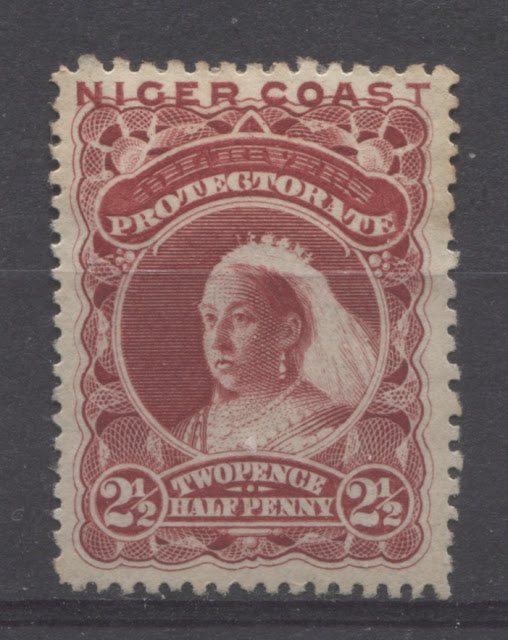


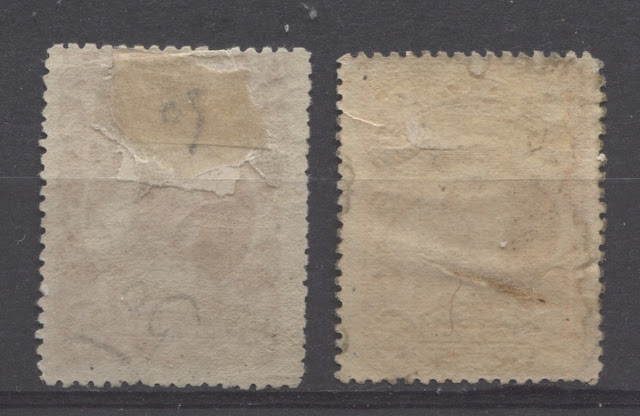
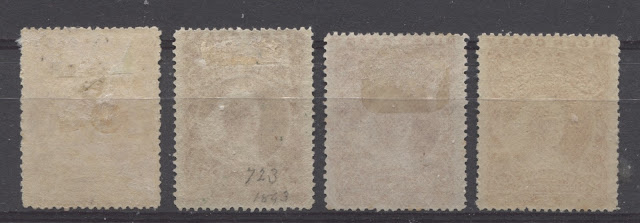

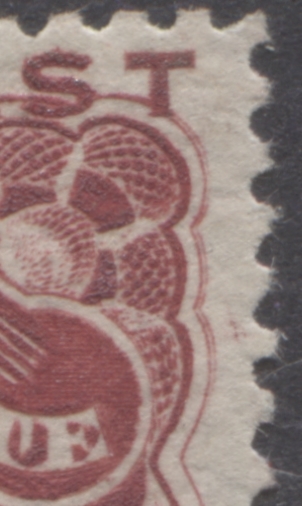

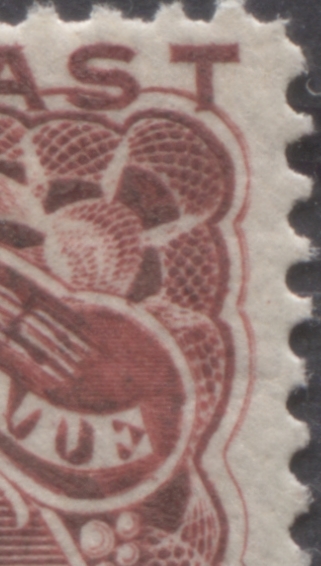
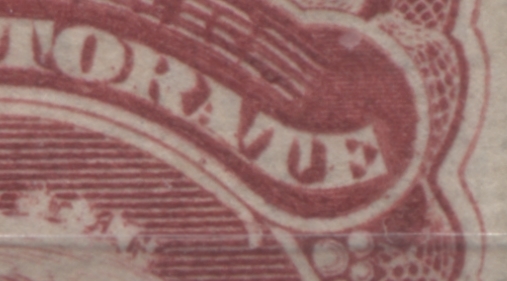
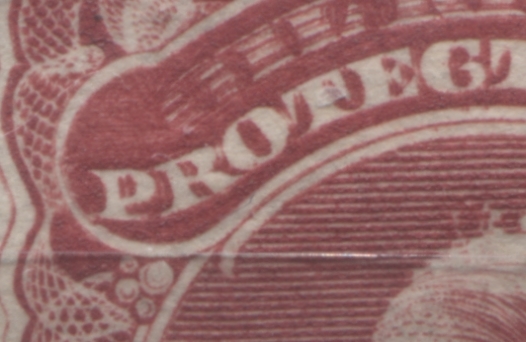

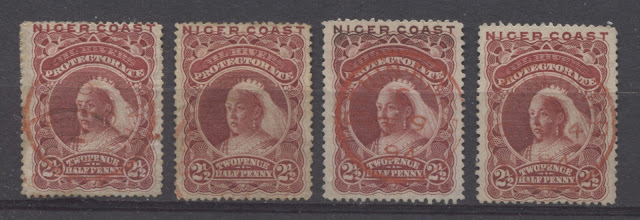


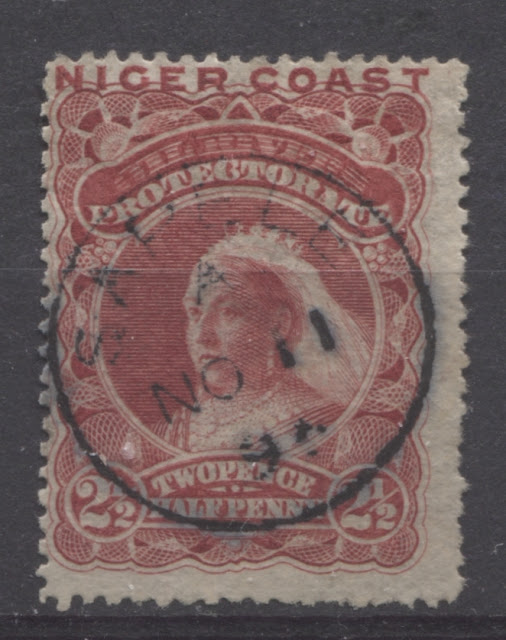
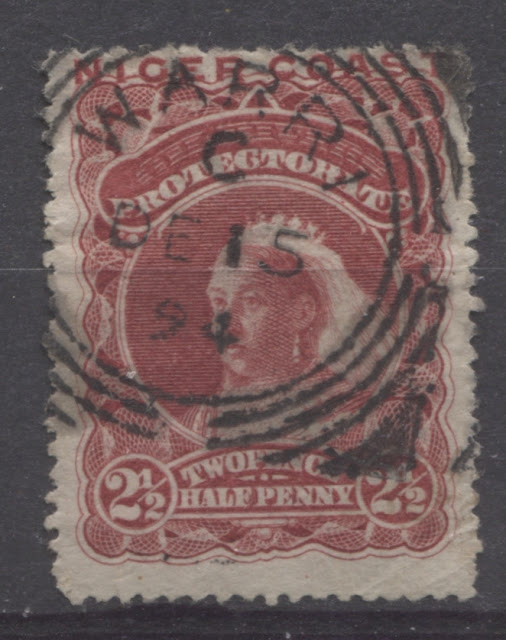



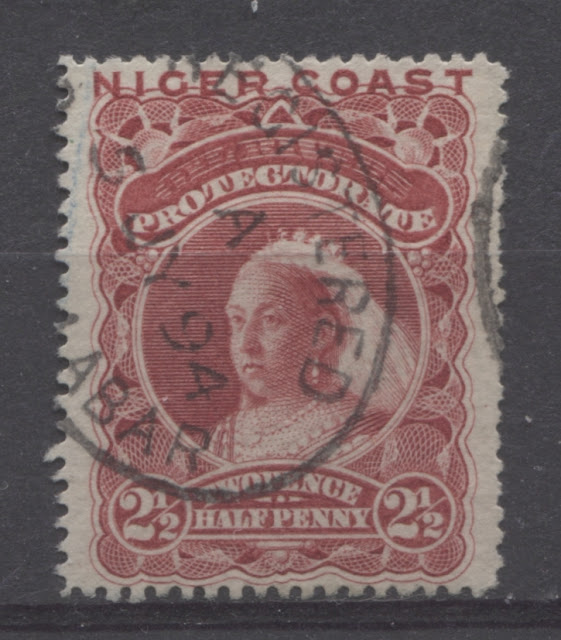


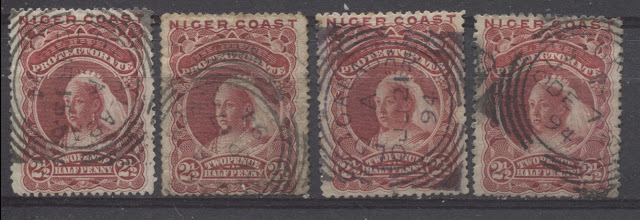
1 comment
This oxidation of the lake colour ink…was most likely the effect of the environment after printing. Do you agree ?